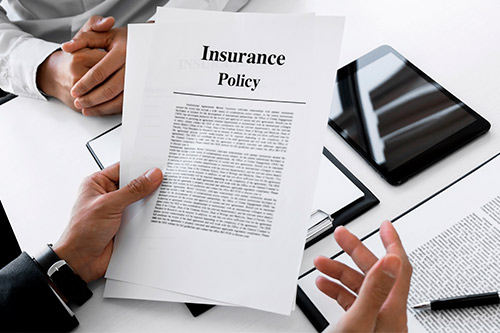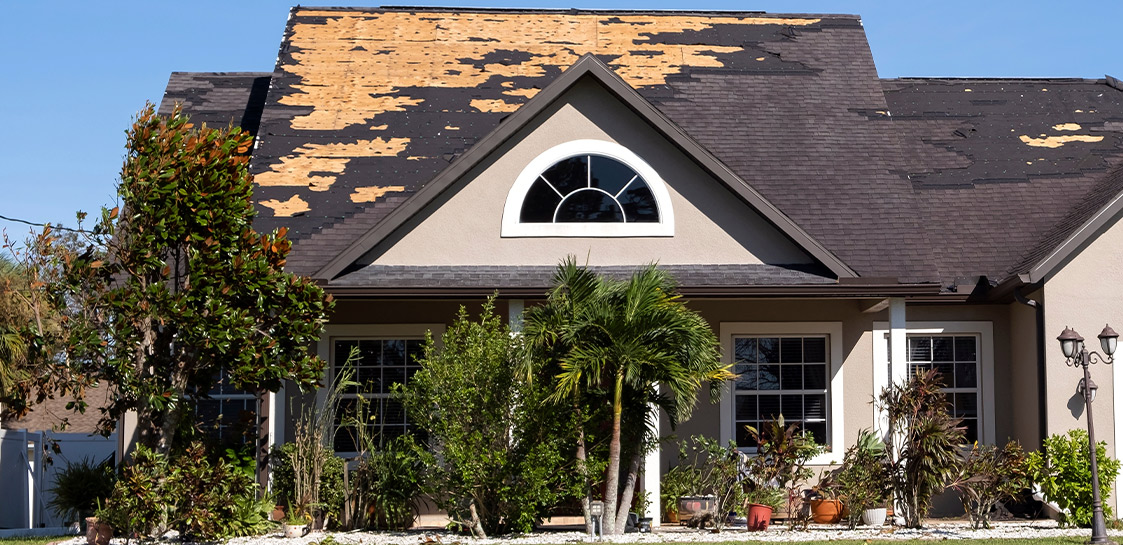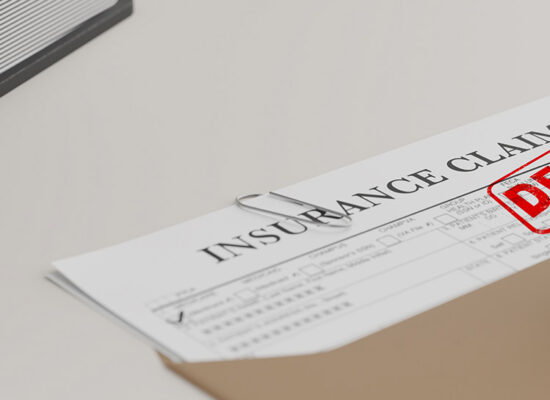10 Steps to Maximize Your Hurricane Damage Claim in Texas
Hurricanes are a formidable force of nature, and for Texas residents, they’re an all-too-familiar threat. When a storm strikes, the damage left in its wake can upend lives, destroy homes, and disrupt businesses—often leaving policyholders overwhelmed and unsure of where to begin. Maximizing your hurricane damage claim isn’t just about recovering financially; it’s about reclaiming stability and rebuilding with confidence.
In Texas, where wind, rain, and flooding can wreak havoc in equal measure, understanding how to navigate the insurance process is essential. This guide outlines ten actionable steps to ensure you get the most out of your claim, from deciphering your policy to securing the settlement you deserve. Whether you’re a homeowner, renter, or business owner, these strategies will empower you to face the aftermath head-on and come out stronger.
1. Understanding Your Insurance Policy

When facing hurricane damage in Texas, the first step toward maximizing your claim is understanding exactly what your insurance policy covers. Many homeowners are surprised to learn that standard homeowners insurance typically covers wind damage but excludes flooding, which requires separate coverage.
Standard homeowners policies generally cover wind-related damages, including roof damage, broken windows, and water that enters through wind-created openings. However, they explicitly exclude rising water damage, which is often the most devastating aspect of hurricanes.
For comprehensive hurricane protection, Texas residents should understand the differences between policies. The National Flood Insurance Program (NFIP) covers flood damage, while the Texas Windstorm Insurance Association (TWIA) provides windstorm coverage for coastal properties. Each has different requirements, limitations, and claim processes.
Hurricane deductibles typically differ from standard deductibles. Rather than a fixed amount, they’re often calculated as a percentage of your home’s insured value—usually 2-10%. For example, a $250,000 home with a 5% hurricane deductible would require a $12,500 out-of-pocket payment before coverage begins.
2. Immediate Steps Post-Hurricane
After a hurricane passes, your first priority must be safety. Assess your surroundings carefully and avoid potential hazards such as downed power lines, compromised structures, or flood-contaminated areas. If authorities advise evacuation, follow their instructions immediately.
Once safety is established, document all damage thoroughly. Take clear photos and videos from multiple angles, capturing both wide shots to show the full extent of damage and close-ups to document specific details. Create a detailed inventory of damaged items, including descriptions, estimated values, and purchase dates when possible.
Your insurance policy requires you to take reasonable steps to prevent additional damage. Make temporary repairs such as covering broken windows with plywood, placing tarps over damaged roofs, and removing water to prevent mold growth. Keep all receipts for materials and services—these expenses are typically reimbursable under your policy.
3. Contacting Your Insurance Company

Once you’ve ensured safety and documented the damage, contact your insurance company immediately. Many insurers impose time limits for reporting claims, and delays could jeopardize your settlement. Be prepared to provide your policy number and a concise description of the damage.
During this initial call, request a copy of your policy if you don’t have it available. Ask specific questions about your coverage, including what types of hurricane damage are covered, exclusions that might apply, and your deductible amount. Write down the claim number you’re assigned—you’ll need it for all future communications.
Understand the timeline for your claim process. In some states, insurance companies must acknowledge claims within specific timeframes—for example, reviewing within 14 days and deciding to pay or deny within 90 days of receipt. Keep detailed records of all conversations with your insurer, including representative names, dates, and what was discussed.
4. The Role of a Public Adjuster
When dealing with hurricane damage claims in Texas, a public adjuster can be your greatest advocate. Unlike insurance company adjusters who represent their employer’s interests, public adjusters work exclusively for you, the policyholder. Their sole purpose is to help maximize your settlement by ensuring all damage is properly assessed, documented, and submitted.
Public adjusters bring specialized expertise to the complex process of hurricane claims. They understand the intricacies of insurance policies, including the differences between NFIP, TWIA, and standard property insurance. This knowledge allows them to identify coverage you might not recognize and document damages in ways that align with policy requirements.
Engaging a public adjuster early in your claim process can significantly streamline your experience. They can take over communications with your insurer, handle paperwork, coordinate with contractors, and negotiate settlement offers. Many policyholders find that having this professional assistance not only reduces stress but often results in substantially higher settlements than they might secure on their own.
5. Preparing for the Adjuster’s Visit
After initiating your claim, the insurance company will send an adjuster to assess the damage. This visit is critical—it directly impacts your settlement amount. Thorough preparation can significantly influence the outcome in your favor .
Before the adjuster arrives, organize all documentation systematically. Create a room-by-room inventory of damaged items, compile your photos and videos chronologically, and gather all receipts for emergency expenses. Prepare a written summary highlighting major damage points, estimated values, and any contractor estimates you’ve obtained.
Having a professional contractor present during the inspection is invaluable. Contractors can identify structural issues that might not be immediately visible and provide technical explanations about necessary repairs. Their expertise helps ensure the adjuster doesn’t overlook costly damage that requires professional remediation.
Be prepared to explain any temporary repairs you’ve made. Show the adjuster the original damage through your photos, then demonstrate the emergency measures taken. Present all receipts for materials and labor, explaining how these actions prevented further damage. Remember, temporary repairs should be documented but not hidden—the adjuster needs to understand the full extent of the initial damage.
6. Reviewing the Settlement Offer

After the adjuster’s inspection, you’ll receive a settlement offer from your insurance company. This is a critical moment in your claim process. Review this document with extreme care, as accepting an insufficient offer could leave you paying thousands out-of-pocket for necessary repairs.
Before making any decisions, consult with your contractor or restoration company. These professionals can determine if the settlement adequately covers all necessary repairs. They can identify underpaid items or overlooked damage that should be included in your claim. Their professional estimates provide valuable leverage if you need to challenge the insurer’s assessment.
If the offer seems insufficient, don’t rush to accept it. You have options. Consider negotiating directly with your insurance company, providing additional documentation to support your case. If you haven’t already, this might be the time to engage a public adjuster who can professionally represent your interests and negotiate on your behalf. Remember that hurricane claims often have higher percentage-based deductibles (typically 5-10% of damage), so understanding exactly what you’re entitled to is crucial.
7. Navigating Claim Denials
Despite your best efforts, insurance companies may still deny your hurricane damage claim. Common reasons include incorrectly filed paperwork, unpaid premiums, insufficient evidence, or policy exclusions. Understanding these potential roadblocks can help you prepare accordingly and avoid unnecessary setbacks.
If your claim is denied, first request a detailed explanation in writing. Insurance companies are legally required to provide reasons for denial. Review this document carefully alongside your policy to identify any discrepancies. Then gather additional evidence to strengthen your case, including supplementary photos, contractor estimates, weather reports, and testimonials from neighbors with similar damage.
Submit a formal appeal letter to your insurer that addresses each reason for denial with corresponding evidence. Be thorough but concise, focusing on policy language and documented facts rather than emotional appeals. Keep copies of all correspondence and follow up regularly on your appeal’s status.
If your appeal is unsuccessful, consider seeking professional assistance. A public adjuster can reassess your claim and negotiate with the insurance company, while an attorney specializing in hurricane claims can provide legal representation if necessary. For claims that appear to involve bad faith practices, you can also file a complaint with the Texas Department of Insurance, which oversees insurer compliance with state regulations.
8. Special Considerations for Commercial Properties
Commercial properties face distinct challenges when navigating hurricane damage claims in Texas. Unlike residential properties, the stakes are significantly higher for businesses, multifamily buildings, schools, religious organizations, and industrial facilities. The damage extends beyond physical structures, directly impacting business operations, revenue streams, and the broader community they serve.
Commercial insurance policies differ substantially from residential coverage. These policies typically include multiple coverage types—such as business interruption, property damage, and liability protection—each with its own stipulations. Understanding how these protections interact with NFIP flood policies and TWIA windstorm coverage is crucial for comprehensive recovery.
Documentation requirements for commercial claims are more extensive. Beyond physical damage evidence, businesses must document financial impacts like revenue loss, operational disruptions, and lost inventory. Building code compliance documentation becomes especially important, as commercial structures must adhere to stricter rebuilding standards after significant hurricane damage.
The complexity of commercial property claims makes professional assistance particularly valuable. Public adjusters with experience in commercial claims can navigate the intricate web of policies, ensure proper valuation of both physical and business losses, and advocate for maximum settlement across all applicable coverages. For commercial property owners, this expertise often means the difference between business recovery and permanent closure.
9. Additional Financial Assistance and Resources

Even with comprehensive insurance coverage, hurricane damage often exceeds policy limits or falls under exclusions. Fortunately, additional financial resources exist beyond your insurance policy. The Federal Emergency Management Agency (FEMA) offers various assistance programs for hurricane victims in Texas. Visit DisasterAssistance.gov and enter your address to determine eligibility for emergency housing, medical aid, or direct financial assistance.
The Small Business Administration (SBA) provides low-interest disaster loans to help rebuild or repair damaged property. Despite the name, these loans aren’t limited to businesses—homeowners, renters, non-profit organizations, and small businesses can all apply. SBA loans offer longer repayment terms and lower interest rates than standard loans, making them valuable resources for comprehensive recovery.
Texas residents should also explore state-specific programs like the Texas Department of Emergency Management assistance and local non-profit organizations. The American Red Cross, Salvation Army, and local community foundations often provide immediate relief through temporary housing, food assistance, and rebuilding support. Many religious organizations also coordinate volunteers and resources for affected communities.
10. Future Preparations for Hurricane Season
Hurricane season is an annual reality for Texas residents. While you can’t prevent hurricanes, you can significantly reduce their impact through strategic preparation. Start by reinforcing your property’s vulnerable areas—upgrade to impact-resistant roofing materials, install storm shutters, and strengthen garage doors. Consider landscaping modifications like improving drainage and removing potential projectiles. These improvements may also qualify you for insurance discounts.
Review and adjust your insurance coverage annually—before hurricane season begins. Remember, insurers prohibit policy changes once a hurricane is named. Carefully assess whether you need separate flood insurance or windstorm coverage through TWIA. Maintain detailed documentation of any property improvements that might affect your coverage or premiums.
Finally, develop a comprehensive emergency plan. Establish clear communication protocols for family members, map evacuation routes, and designate meeting points. Create a digital inventory of your possessions with photos and videos, storing copies in cloud storage. Maintain emergency supply kits with essentials for at least three days, including medications, important documents, and contact information.
Are you ready for the Hurricane in Texas?
While hurricanes remain an unavoidable reality for Texas residents, you don’t have to face their aftermath alone. Recognize when to seek professional assistance. At Palker Law Firm, we understand the challenges you face and are dedicated to helping you secure the settlement you deserve.
With battle-tested expertise, we can take your case all the way to compensation. Let us fight for you and win. Reach out to us today for a free case review, and let us help you weather the hurricane, and the legal battle, together.






